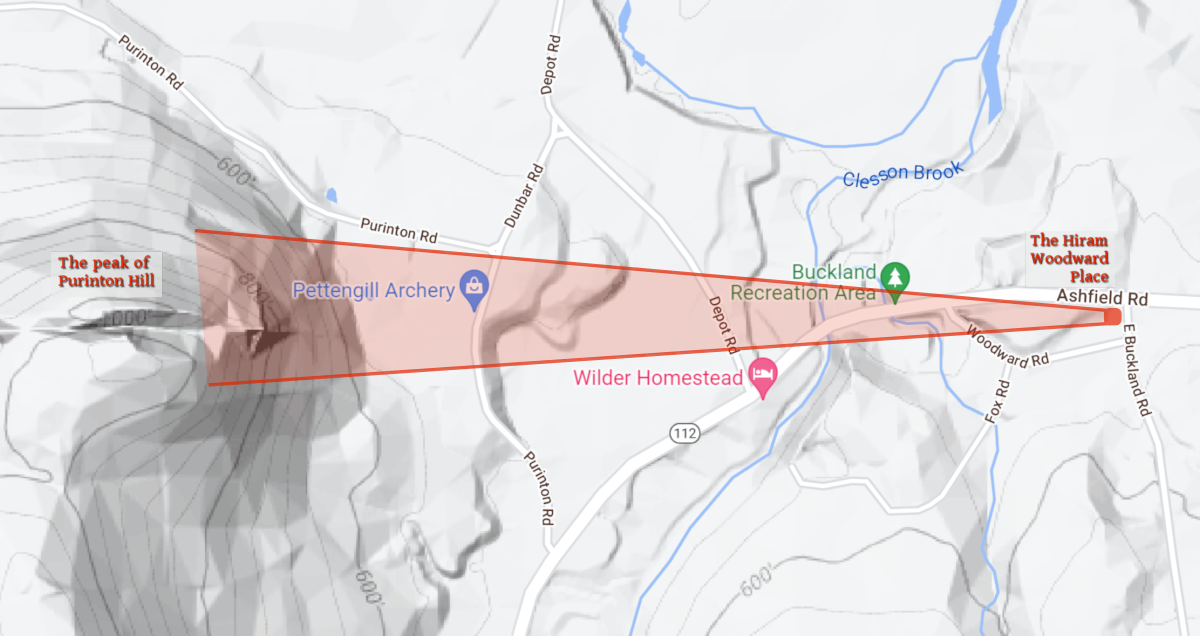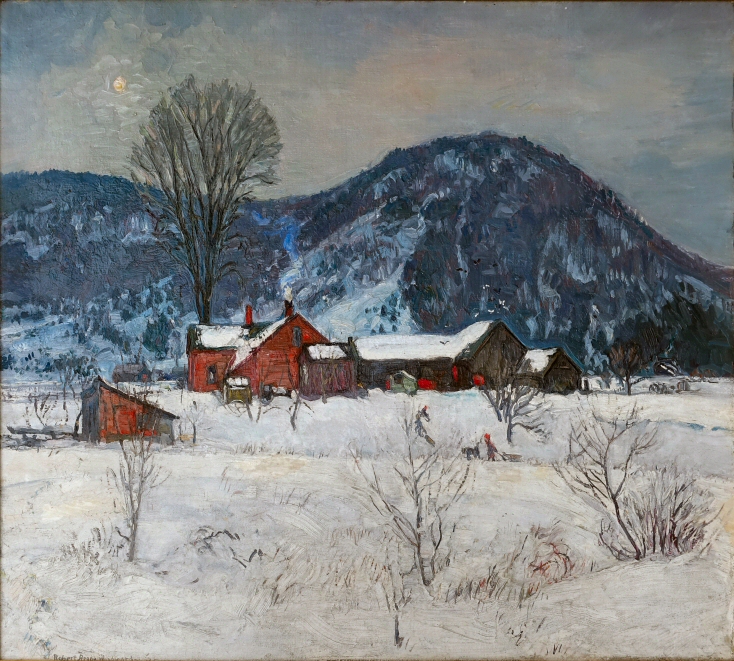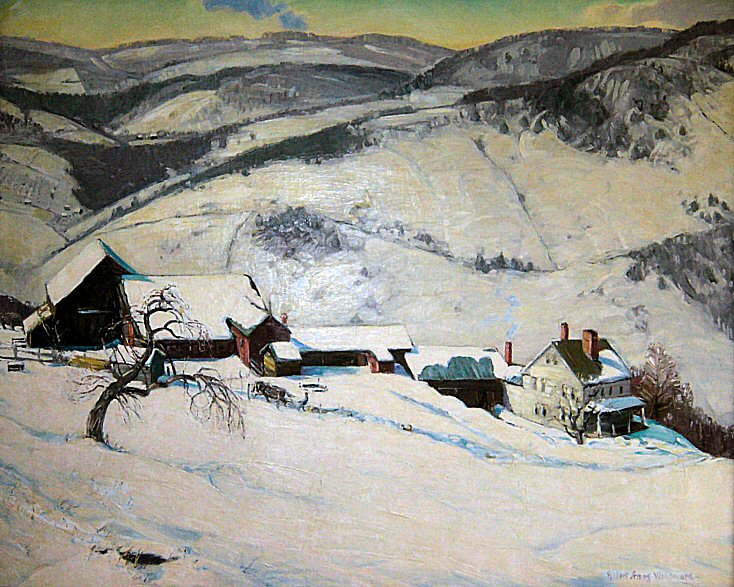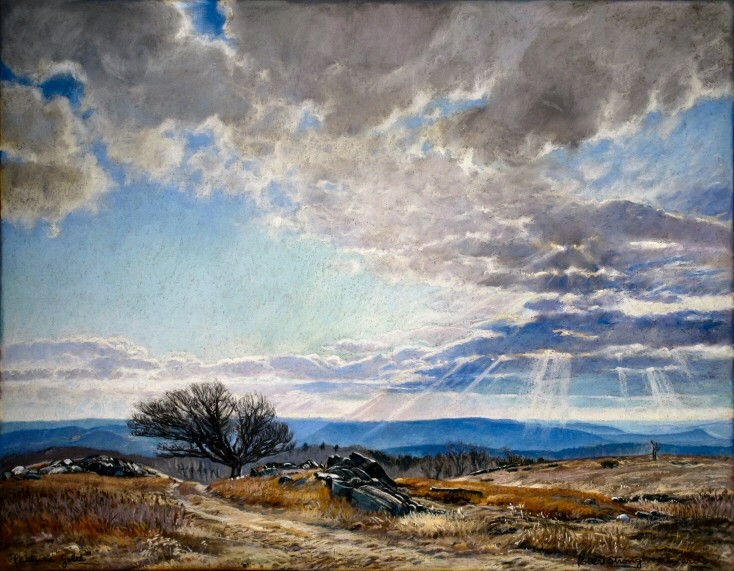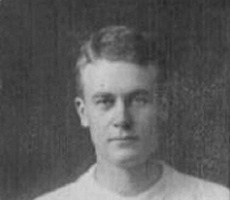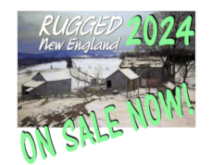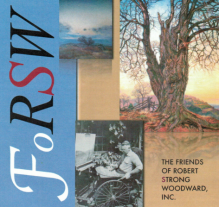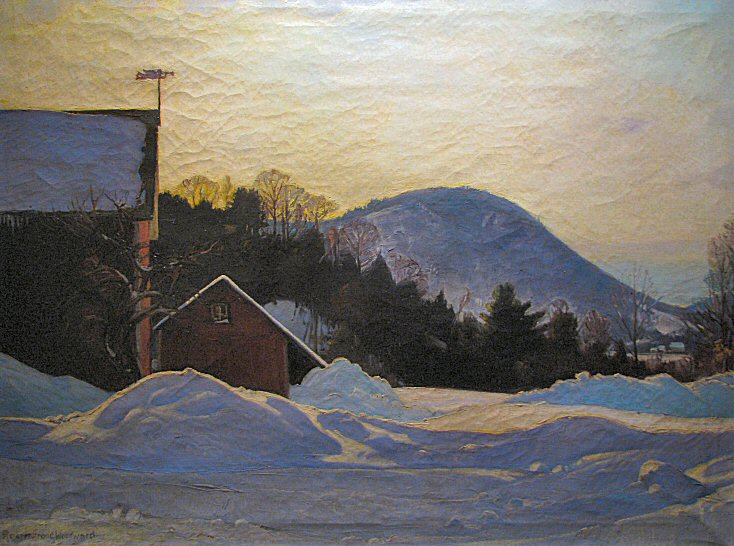Quick Reference
Painted in 1932.
Hiram Woodward Studio
Oil on Canvas
Landscape
Mountains
30 x 40
Unknown
Unknown
NA
Featured Artwork: When The Sun Rides Low
RSW's Diary Comments
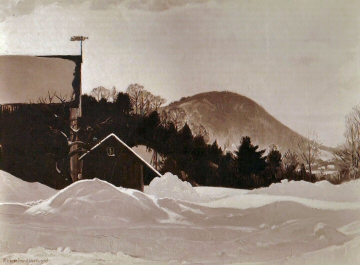
 When The Sun Rides Low Sepia
When The Sun Rides Low Sepia
"Painted in 1932. A brilliant winter painting of the barn and slant roofed garage of my old place that burned in July 1933, made from my studio glass door the winter before. Yellow, hazy sky of late afternoon or early winter sunset time, deep snows with very blue deep drifts in afternoon shadow, filling the foreground. The slanting shoulder of a dark, evergreened hill (nearby) with blue dome of Purinton Hill against the sky to the right. One of the most intense and ardently emotional canvases I ever made, greatly admired by everyone in the studio and largely exhibited, but never sold until the spring of 1944 when sold to .... of Maryland and Washington D. C. (She is the step daughter of Dr. Lunt.) Given by her to her husband Russell ... but Faith soon divorced. I do not know where it now is."
Comments in a notebook by RSW:
" March 29, 1935. Sent by R.R. Express in one crate, When the Sun Rides Low, to the Macbeth Galleries, N. Y. thru the packers, W. S. Budworth and Son."
Additional Notes
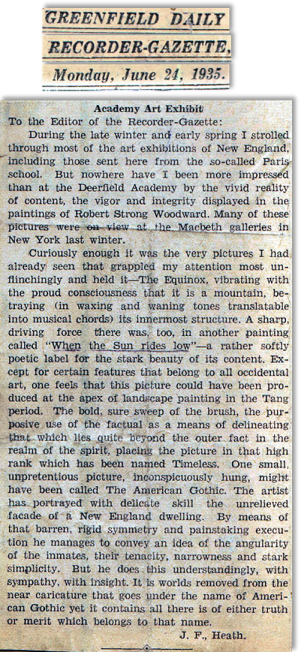
 Click on image to enlarge
Click on image to enlarge
The Springfield Daily Republican, Nov. 9, 1934
"Perhaps one of the loveliest of these the one entitled When the Sun Rides Low, painted from the artist's studio window at Shelburne Falls. The purple shadows on the snow, the contrasting green of the firs, the friendly red of the barn and shed, against the background of wintry sky and distant hills endears this picture to anyone familiar with New England."
 This painting was the cover photo for the Buckland Bicentennial publication. There is possibly a third identical painting in existence but
its whereabouts is unknown.
This painting was the cover photo for the Buckland Bicentennial publication. There is possibly a third identical painting in existence but
its whereabouts is unknown.
 To the right: Is a letter to the editor of the Greenfield Daily Recorder-Gazette, Monday, June 24, 1935 by a J. F. Heath and
references When the Sun Rides Low.
To the right: Is a letter to the editor of the Greenfield Daily Recorder-Gazette, Monday, June 24, 1935 by a J. F. Heath and
references When the Sun Rides Low.
 Below is a picture of Woodward's barn and small shed but not from his studio door. The photo appears to have been
taken from near or aside the main house.
Below is a picture of Woodward's barn and small shed but not from his studio door. The photo appears to have been
taken from near or aside the main house.
Unfortunately, the picture does not show the weathervane of the Trumpeting Angel.
It does show the tree, now in bloom, suggesting the photo was taken in the spring.
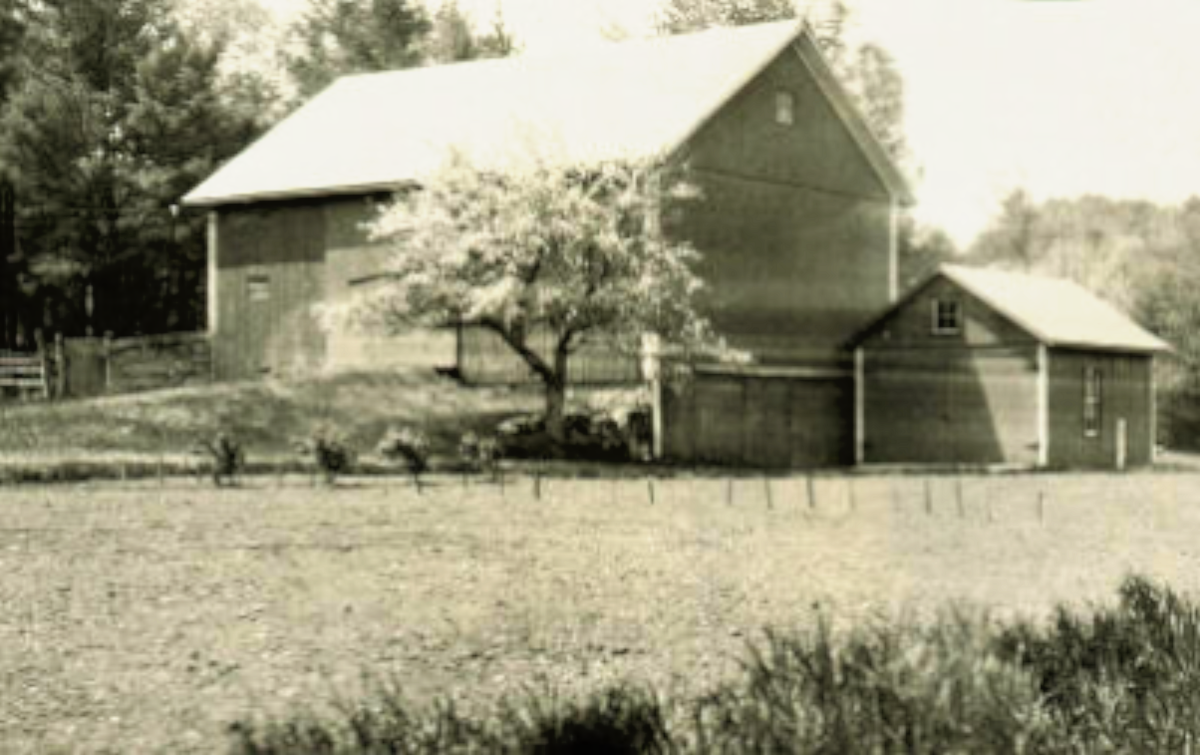
 Hiram Woodward Barn
Hiram Woodward Barn
A Trumpeting Angel is featured in another painting aptly titled, The Trumpeting Angel,
however, it is not the same scene. It is a different building. Still we can't help wondering if Woodward so loved the quaint weathervane if he did not make
a deal to purchase it from the owner of the shed in that painting.
Below is a topographic capture of a map confirming that Woodward's
western view was that of Purinton Hill. His studio was on the western side of the property.
For a layout of the Hiram Property CLICK HERE PDF
will open in a new tap
